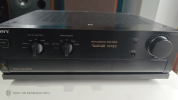Clmrt
Member
- Joined
- Feb 26, 2023
- Messages
- 94
- Likes
- 107
Not to mention the repairable nature of older amps. So long as it doesn't have unicorn tears for outputs or long obsolete ICs, old amps can be restored.
Newer class D amps seem to be disposable. I know a many simply have entire modules replaced. Basically the case remains but the guts get swapped. Maybe even under warranty. Fine. If the cost to repair can be justified, and you only have to do it once, you still have to argue that your rebuilt vintage gear makes you feel better about your system than modern equivalents.
I have one case where I do like the vintage vibe mixed with my modern HT, and one case where I think it was a waste of resources to refurb an older piece. Next time I need amplification, I'll likely try something new, under $200. I've never spent more than $500 at once for anything audio related, and see no need to start now, not with so much good gear on the used market.
Newer class D amps seem to be disposable. I know a many simply have entire modules replaced. Basically the case remains but the guts get swapped. Maybe even under warranty. Fine. If the cost to repair can be justified, and you only have to do it once, you still have to argue that your rebuilt vintage gear makes you feel better about your system than modern equivalents.
I have one case where I do like the vintage vibe mixed with my modern HT, and one case where I think it was a waste of resources to refurb an older piece. Next time I need amplification, I'll likely try something new, under $200. I've never spent more than $500 at once for anything audio related, and see no need to start now, not with so much good gear on the used market.







